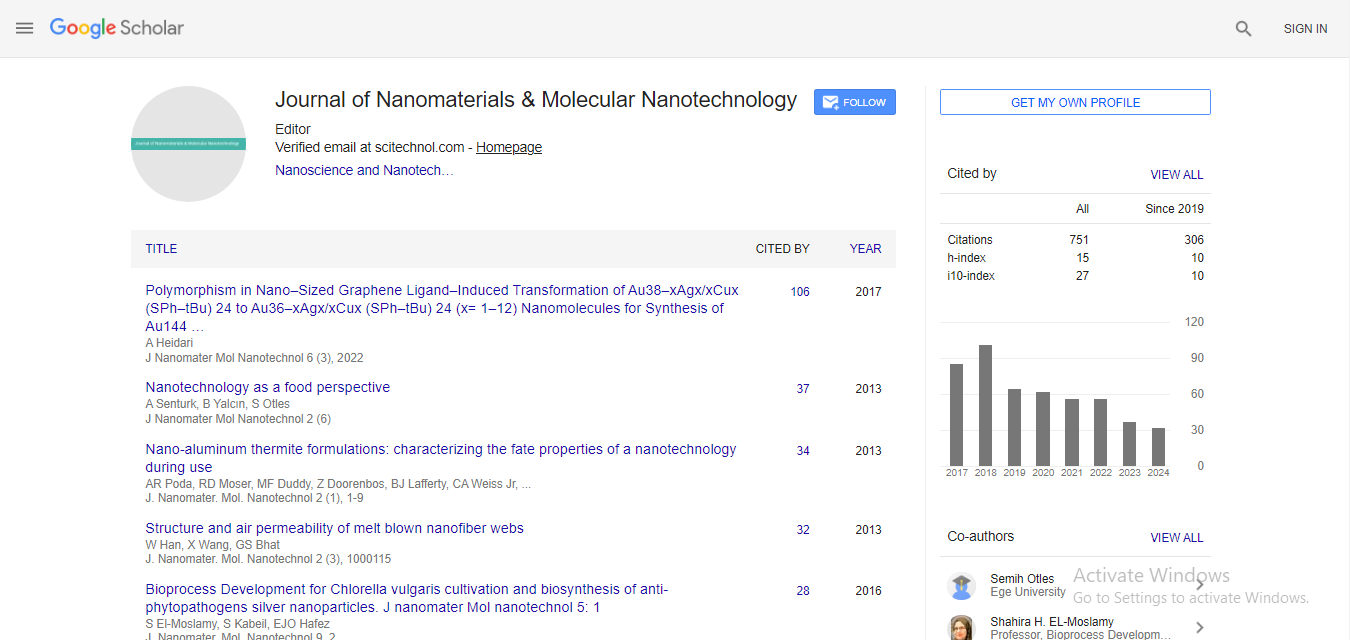Nano-sized interconnection formation by Directed-Self- Assembly
M Murugesan
GINTI, NICHe, Tohoku University, Japan
: J Nanomater Mol Nanotechnol
Abstract
An alternative to conventional TSV interconnection formation methodology has been attempted by using advanced Directed Self-Assembly (DSA) method with nanocomposites comprised of blockco- polymers and metal nanoparticles. A well aligned vertical cylindrical nanostructures are formed inside the deep through-Si-via (TSV) structures for the phase separation of polystyrene-block-polymethyl methacrylate (PS-b-PMMA) copolymers with PS:PMMA ratio of 2:1. Keywords: Nano-cylinders, DSA, TSV. Since the evolution of The TSV interconnection technology, it has been widely used in the high-end hand-held electronic gadgets. The demand for the fine-pitch TSVs and micro-bumps (interconnections) have been increasingly growing year by year, since without which it is increasingly difficult to realize the big-data information processing (such as neuromorphic computing and artificial intelligence systems). It is expected that TSV dimension will be shrinked from micrometer level to nanometer level, to fully exploit the TSV advantages in 3D-LSIs/ICs. Even though sub-micron TSVs are conventionally fabricated using chemical vapor deposition techniques, they involve higher temperature and only suitable for via-middle approach. In the case of via-last TSV integration process, the back-end-of-line BEOL) process temperature must be less than 300℃. Of late, we have been pioneering the vertical nanointerconnect fabrication for future 3D-LSI integration using the DSA method [1], which is widely considered as next-generation lithography technology and an alternative for EUV. Shown in Fig. 1 shows(a) is the phase diagram for block copolymer, and it is possible to make vertical columnar structures provided if one maintains the 2 to 1 ratio between the two block copolymers. Based on this, we are able to obtain the cylindrical columnar structures inside the deep Si trenches as shown in the SEM images of fig. 1(b) trough (d). More details will be discussed about the DSA reaction of different copolymers, and how to metallize these nano-structures for TSV applications in future 3D-LSIs/ICs.
Biography
M Murugesan received the Ph.D degree in chemistry from Indian Institute of Technology, Bombay, India, in 1995, and the D.E. degree in materials engineering from Muroran Institute of Technology, Muroran Japan, in 2000. Since 2006, he has been with Tohoku University, Sendai, Japan, where he is currently a research Fellow with the New Industry Creation Hatc hery Center.in 1995, from His recent research field involves 3D-LSI process Integration, Solid Stat Chemistry and Materials Science, and his area of interest are (i) 300 mm level 3D-LSI/ IC _ integration process _ reliability issues; (ii) CMOS and Transistor fabrication using magnetic nanodots; (iii) Electrical and physical characterization of devices and processes.
E-mail: murugesh@bmi.niche.tohoku.ac.jp
 Spanish
Spanish  Chinese
Chinese  Russian
Russian  German
German  French
French  Japanese
Japanese  Portuguese
Portuguese  Hindi
Hindi 



